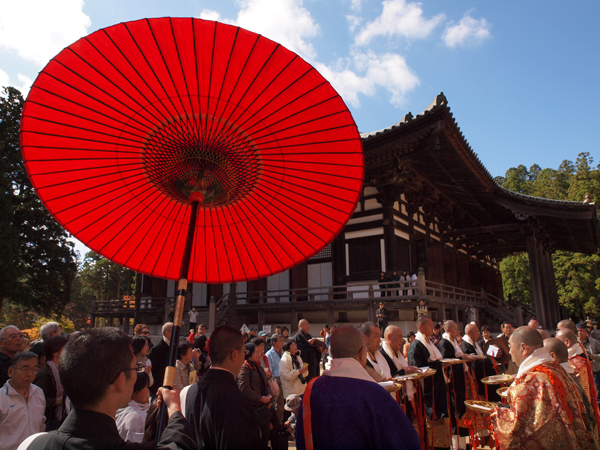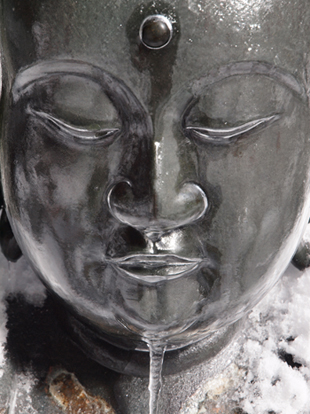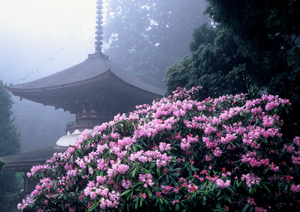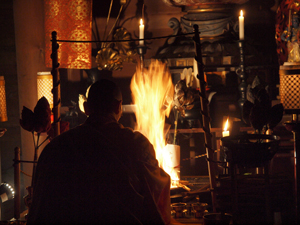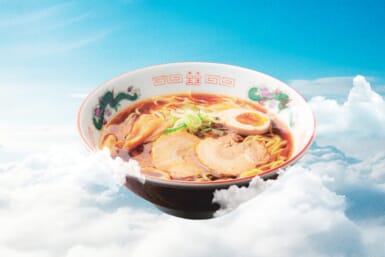Many believe that the jewel in the crown of Wakayama prefecture is the idyllic Mt. Koya. Not just one mountain but the name given to the area; it was first settled by Kobo Daishi, a monk who travelled all the way to China and back only to find that the ideal spot to practise lay in the dense green peninsula of Wakayama.
There are countless memorials to Kobo Daishi, with a local tale to match every one, including intriguing handprints in rocks laying around the area; there is much to learn about this mysterious place but one thing is abundantly clear, he picked a great spot. Michelin agrees, having awarded the area three stars in its 2012 Green Guide Japan.
If you adore Japanese architecture, the buildings scattered around the valleys and peaks of the area have a lot to offer. The Konpon Daito, or Great Pagoda, which was originally designed by Kobo Daishi in 816 took nearly seventy years to complete.
Due to being repeatedly damaged by fire, it was rebuilt in 1937 and it stands at an impressive 49 meters high. Inside, there are five statues of Buddha, one in the centre and four in the corners; an arrangement said to represent the three dimensions of Shingon Buddhist worship.
For a real slice of history, be sure to see the building known as Fudodo; the oldest intact building in Koya. Having been built in 1197, it is amazing that it has escaped calamity, being built almost entirely of wood and having had fires brush past it over the centuries. This rare peek into ancient Japanese history is a National Treasure.
Another must-see is the eerily tranquil and undeniably beautiful Okunoin, a vast cemetery with almost innumerable plots. The path extends over two kilometers and there are said to be over 200,000 graves and monuments.
Although there are thousands of variations in the designs and inscriptions on the tombs, the vast majority of them are adorned with five Sanskrit characters, representing the key elements of the Buddhist faith: earth, water, fire, wind and space.
Those whose ashes are at Okunoin are in good company – with Daimyo, or rulers, samurai and famous authors – but without a doubt the most famous ‘occupant’ of Okunoin is Kobo Daishi himself, who is said to still be in eternal meditation, concentrating on the well being of the world.
His mausoleum, known as Kobo Daishi Gobyo, merges with the ancient cedar trees and softly flowing streams. If you can, keep your eyes peeled at 6:00 a.m. and 10:30 a.m. when, every day, meals are presented to Kobo Daishi by his loyal followers.
Botany fanatics will appreciate the abundance of hydrangea flowers, which bloom here in July. In the autumn, the lush green surroundings take on red and orange hues as the maple and ginkgo trees start shedding their leaves for winter.
Although the times vary depending on the weather, if you want to catch the autumnal colours, aim for around late October or early November. Cherry trees bloom a month later in Koya than the rest of the Kansai area, meaning you can still enjoy the blossoms until the end of April.
Winter is tough in Koya, with temperatures dropping as low as -10C. The tourist trade does slow down though, so if you want true tranquility then it is a fantastic idea to go when the snow falls.
There are also several festivals to mark on the calendar, first up is the Koya Fire Festival, on the first Sunday of March, when a large fire marks the approach of spring. People burn the trinkets and singe the amulets they bought from the surrounding shrines the year before and pray for both good luck and the warding-off of evil spirits.
On March 21, of the lunar calendar, is the Kyusho Mieku ceremony, when thousands of people bring flowers and candles to the temple to mark the date Kobo Daishi entered eternal meditation. Members of the public are allowed to enter sections of the Miedo, the only time of year that that is allowed.
On June 15th, a colourful parade, the Aoba Matsuri, marks the birth of Kobo Daishi; floats, dancers and lanterns march from one side of Koya to the other.
On August 13th you can feast your eyes on the beautiful Candle Festival, at which thousands of candles are spread along the Okunoin path leading to his mausoleum. It is not to be missed.
There are plenty of places to stay in the area, with 52 temple lodgings to choose from. Each of them offers an authentic look into Buddhist life, with meditation, vegetarian foods and traditional decor. Perhaps the most renowned is Rengejoin, an amazing temple with Japanese style guest rooms, a short walk from the Koya high street and Mount Koya cable car station, which is run by a spritely 93-year-old woman.
The lodgings and the restaurant you will be eating in pride themselves on their sesame tofu and vegetable dishes; if you want to eat healthily, you are in luck. In the early evenings and early mornings there is a Buddhist ritual, which you are encouraged to join. The spacious rooms and carefully tended garden make Rengejoin an amazing extension to the experience you will have in Koya, one of pure relaxation and enjoyment.
By Adam Miller
Have a look at this link for more information on getting to Wakayama, just 40 minutes from Kansai Airport.

